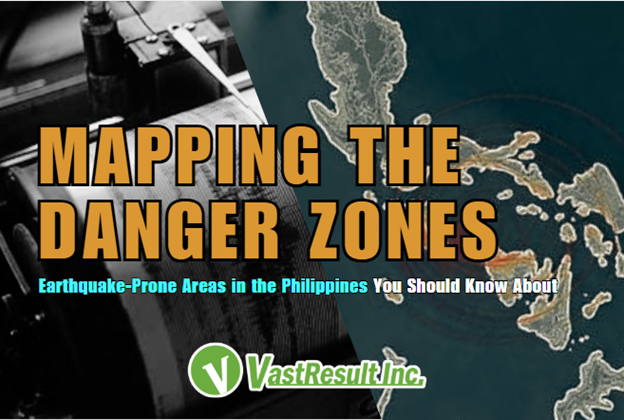
The Philippines is no stranger to earthquakes. Nestled along the Pacific Ring of Fire, our country sits atop multiple active faults and subduction zones, making us highly vulnerable to seismic activity. From the 1990 Luzon Earthquake to the more recent tremors in Mindanao, our history is marked by powerful quakes that have caused significant loss of life and property.
Understanding where these hazards are most likely to strike is a critical step in preparedness and risk reduction. In this blog, we’ll explore the most earthquake-prone areas in the Philippines and why mapping these danger zones can help keep you and your community safe.
Why the Philippines Is at High Risk for Earthquakes
The Philippine archipelago lies between the Eurasian Plate and the Philippine Sea Plate, where tectonic forces constantly interact. These interactions produce earthquakes through:
Subduction zones
– where one tectonic plate slides under another
Active faults
– fractures in the Earth’s crust where movement occurs
Because of this, several areas in the country experience frequent seismic activity—sometimes without warning.
Top Earthquake-Prone Areas in the Philippines
1. Metro Manila and the West Valley Fault
One of the most heavily monitored fault systems in the country, the West Valley Fault runs through densely populated areas such as:
Quezon City
Marikina
Pasig
Taguig
Muntinlupa
According to PHIVOLCS, this fault is capable of producing a magnitude 7.2 earthquake—also known as “The Big One”. The potential impact on lives, buildings, and infrastructure in Metro Manila would be devastating, making earthquake preparedness in this region absolutely critical.
2. Central Luzon (Zambales Fault and East Zambales Fault Zone)
Central Luzon is also at risk due to several active fault systems, including:
Zambales Fault
Digdig Fault (part of the Philippine Fault Zone)
This region was the epicenter of the 1990 Luzon Earthquake, a magnitude 7.8 quake that caused widespread damage and fatalities across Baguio, Cabanatuan, and Dagupan.
3. Eastern Visayas (Leyte and Samar)
Leyte and Samar islands lie near the Philippine Trench, a major subduction zone that regularly triggers powerful earthquakes. The Leyte Fault, a segment of the larger Philippine Fault Zone, was responsible for the 2017 Ormoc Earthquake, which reached magnitude 6.5.
4. Mindanao (Cotabato, Davao, and Surigao Regions)
Mindanao is frequently affected by earthquakes due to its proximity to multiple fault lines and trenches:
Cotabato Fault System
– caused the devastating 2019 earthquake sequence
Surigao Fault
– responsible for the 2017 magnitude 6.7 Surigao Earthquake
Davao Region
– near the Philippine Trench and several inland fault systems
Mindanao’s seismic history highlights the need for widespread earthquake awareness and monitoring infrastructure in the region.
5. Baguio and Northern Luzon
The northern regions of Luzon are crossed by parts of the Philippine Fault System, such as:
Digdig Fault
Itogon Fault
These fault systems were highly active during the 1990 Luzon Earthquake, which severely impacted Baguio City. Due to its mountainous terrain, landslides also pose a secondary hazard following strong quakes.
How to Use This Knowledge for Safety
Knowing where active faults are located can help you:
🏢 Plan smarter construction
Avoid building directly on or near known fault lines
Follow National Building Code standards and PHIVOLCS guidelines
🧭 Enhance local disaster preparedness
Participate in earthquake drills, especially if you live in high-risk zones
Know evacuation routes and emergency procedures
📊 Install earthquake monitoring systems
Buildings in Metro Manila and other high-risk areas are encouraged to install accelerographs and seismic sensors for real-time data and post-earthquake evaluations
👥 Inform your community
Awareness leads to action. Share hazard maps and preparedness tips with neighbors, schools, and workplaces.
Final Thoughts
Living in an earthquake-prone country means we must be proactive, not reactive. Mapping and understanding our danger zones allow us to build better, prepare smarter, and protect lives. Earthquakes may be beyond our control—but how we prepare for them is entirely in our hands.
Need help assessing your building’s earthquake risk or installing seismic instruments like accelerographs?
Contact VastResult today at (02) 8404 0740 or email us at support@vastresult.com for expert consultation and safety solutions tailored to your location.
